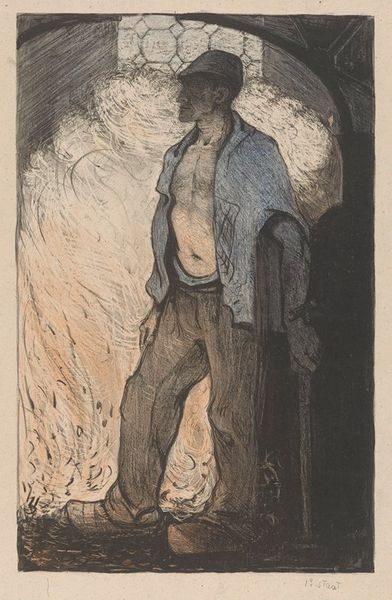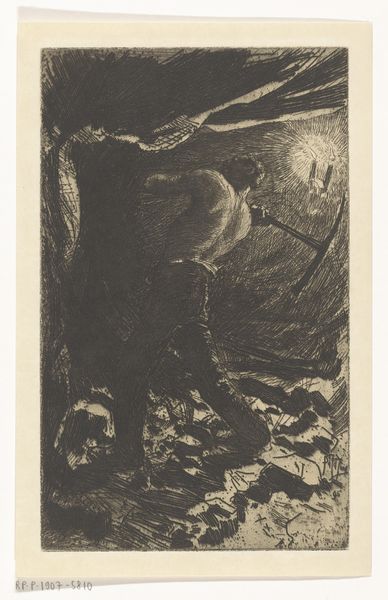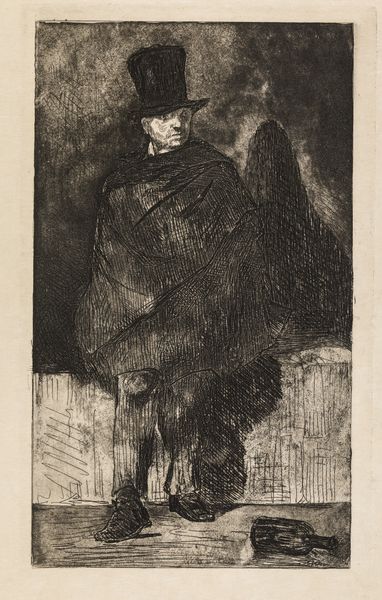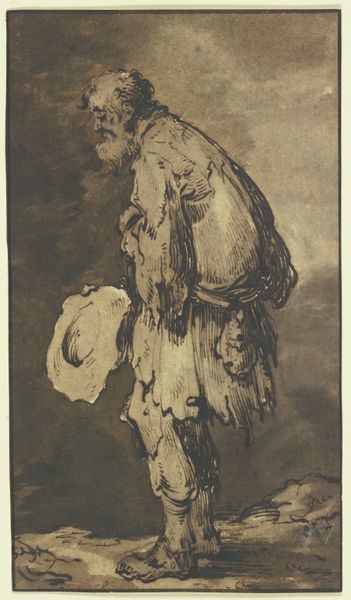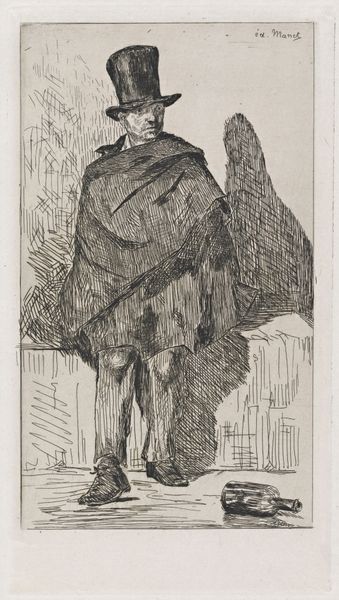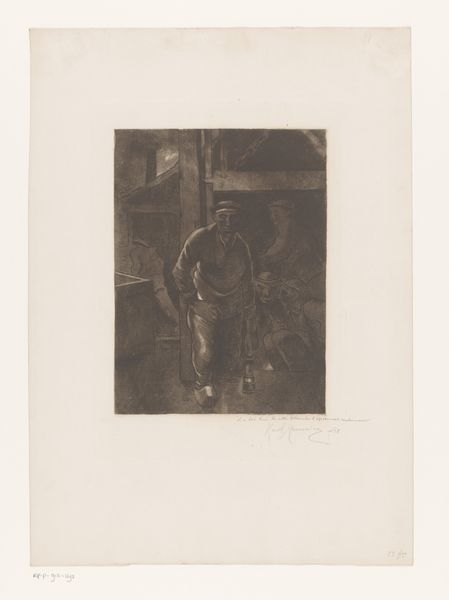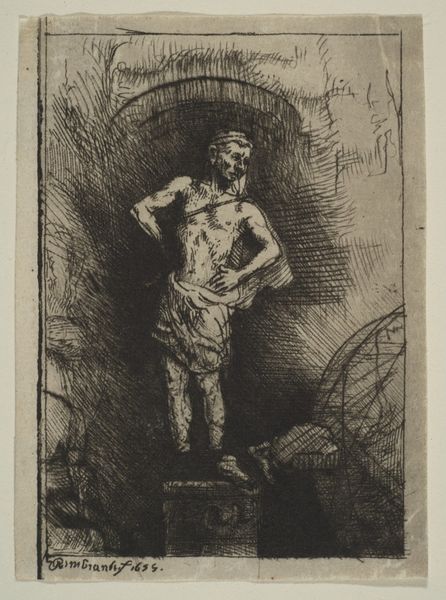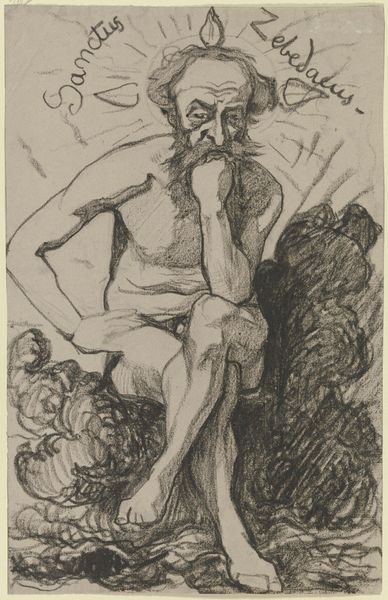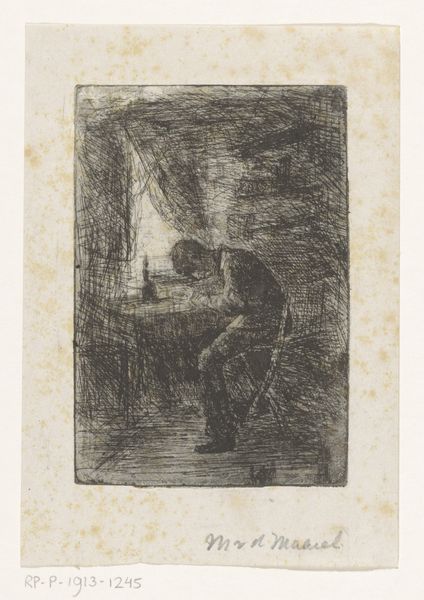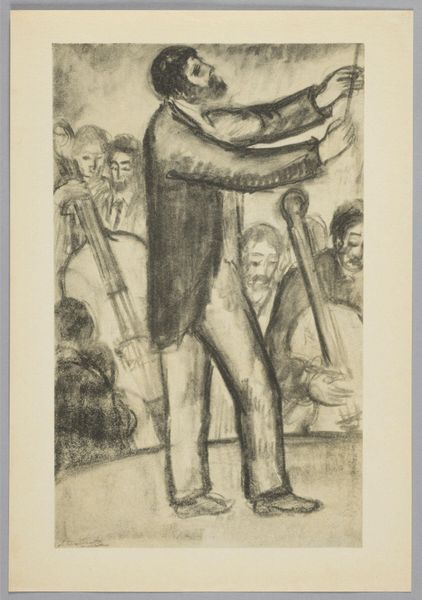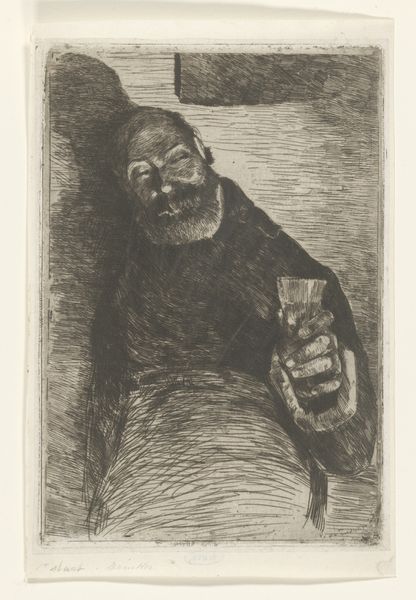
print, etching
#
portrait
#
art-nouveau
#
dutch-golden-age
# print
#
etching
#
figuration
#
symbolism
#
genre-painting
#
realism
Dimensions: height 592 mm, width 418 mm
Copyright: Rijks Museum: Open Domain
Editor: We’re looking at "Arbeider bij een vuur," or "Worker by a Fire," a 1904 etching by Richard Nicolaüs Roland Holst, housed at the Rijksmuseum. The worker's pose, especially juxtaposed with the brightness of the fire behind him, evokes a sense of hardship but also resilience. How might we interpret the social context around this image? Curator: Precisely. The symbolism, typical of Holst, operates on multiple levels. This piece exists within a rich artistic and political discourse. It was produced during a time of increasing socialist movements and growing concerns about labor conditions. We see this concern visualized not only in subject but also in the heroicization of labor often associated with socialist realism—even before that term really solidified as a style. Editor: So you're suggesting it’s more than just documentation of a worker, but a statement about the value of labor within society? Curator: Yes, but consider also the Art Nouveau influences. Holst often walked the line between aesthetic beauty and social commentary. How do the stylized flames, for instance, contribute to the messaging beyond raw realism? The image doesn’t only *depict* labor, it *elevates* the worker to almost a mythical status. Does this relate to other imagery common at the time? Editor: Now that you point it out, the composition reminds me of some religious paintings, the worker replacing the saint illuminated by divine light. It really puts a different spin on things. Curator: Indeed. It becomes a comment on who and what society values. Think about where this piece would have been displayed – likely in exhibitions showcasing art for the people, aiming to instil pride and perhaps even inspire change. The public role of art here is paramount. Editor: It's amazing how the convergence of artistic styles and social concerns can completely reshape how we understand a piece like this. I'll definitely be thinking more about this when I see art from this period. Curator: Absolutely. Examining the artwork as a historical artifact helps us see the complex conversation it participates in, beyond mere representation.
Comments
No comments
Be the first to comment and join the conversation on the ultimate creative platform.

